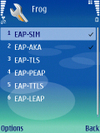This weeks announcement by Nokia of the launch Ovi (Finish for ‘door’) to bundle and extend their mobile services has certainly caught the attention of a couple of people in the industry, even though many saw it coming for a while. For now the announcement did not go into the details of the who, when, where and what but that’s certainly going to change in the next months. I think it is a smart move that comes at the right time. Networks, devices, price plans and applications are close to having reached a level of maturity in many countries to offer an easy, affordable and fun way for people to extend their reach and to discover the world in new ways with the mobile Internet.
Nokia’s Advantages Over Network Operators
Nokia has a number of advantages when it comes to mobile services over network operators. First, they develop the devices that the services run on themselves. Thus they don’t suffer from the fracture network operators have to deal with since their strategy is that the services they offer must run on devices of different manufacturers. Take a look at Vodafone Live! for example and the constant struggle to make the menu structure, icons, etc. of phones of different manufacturers look alike. On top, Nokia has a great mobile platform with S60 that is far more capable than the common minimum denomiator of a multi vendor terminal approach. This makes it a lot easier to develop compelling and easy to use services such as NokiaMaps, which will become a part of Ovi.
Beyond the software platform, Nokia has launched great mobile phone hardware in the past 18 months with their N-series and E-series product categories. Most of these devices now include Wifi which I think is key to delivering services independently of a mobile operator. With Wifi the mobile phone, or rather the ‘multimedia computer’ to use a Nokia term, easily integrates into the users home and office environment. The devices now also include a SIP client which (I think) can become active automatically when the correct WLAN is detected which again circumvents the mobile network operators monopoly and gives users more choice. Nokia didn’t say if VoIP will be part of Ovi but I think it would be a smart move for reasons discussed further below. Integrating into the users home and office environment with Wifi will go far beyond VoIP in future though, as first attempts with UPnP and the Nokia Mobile Web Server already demonstrate today. With the Wifi integration the device can interact with other local devices such as the TV, the computer, the hifi stereo, the network storage, etc. which is not possible at all in a 3G only strategy. Nokia’s cooperation with Microsoft might help further develop this opportunity in the future, too, if Microsoft is willing to cooperate despite their own ambitions with their Microsoft Mobile (Pocket PC) OS.
Economy of scale is also very important. Again, this is an advantage for Nokia since their platform embraces the Internet and can thus be available anytime anywhere. This is also a great tie-in with Wifi integration as some services might only be usable in some countries with still high 3G prices via Wifi at home due to the large amount of data that needs to be transferred (e.g. song downloads). Also, for travelers like me who are used to changing SIM cards several times a month, access to services is independent of operator and place. Mobile network operators on the other hand continue to struggle to recover their investments into their service portals and device adaptations since their user base is considerably smaller. Also, I think their innovation cycles must be a lot longer than what Nokia can do with Ovi since Nokia has to do operator specific adaptations of their software for a myriad of different operators which surely has a huge impact on number of people required and turnaround times.
I think Ovi comes a the right time because 2007 is definitely the year in which the mobile Internet has finally become affordable in many countries. On top, mobile Internet access is now also possible via pre-paid SIM cards in many countries. Early adopters like young people, students, hi-tech travelers etc. have waited for this for years. For Nokia this means that they no longer have to necessarily partner with mobile operators to deliver their services. Users can use pre-paid SIMs or Wifi at home. Excellent and almost unheard of only one and a half years ago! If I were Nokia, I would consider selling such prepaid offers in Nokia stores and on the web as a further kick-starter for devices and services.
The Bitpipe Clash
Inevitably this course brings Nokia even more head on with mobile network operators than before as many still have an interest on doing services themselves. Some might see the change coming and start partnering with Nokia. ‘3’ has made a similar move a couple of months ago and their X-series brand in essence is a co-operation with Internet service providers such as Skype and Co. With Nokia’s Ovi that could be much simpler in the future since an operator would only have to talk to Nokia and not to a myriad of different companies.
How Does The Key Have to Look Like?
I am looking forward very much at how Ovi is going to look like. Having good services is one thing, easy inital configuration is another. Ideally services are both usable from the mobile devices as well as from a PC. It should be possible to configure everything on the PC which is then pushed to the mobile device. Certainly not easy to do in a very very very user friendly way but not impossible. One could for example use SMS push, Wifi or a plug-in for the Nokia PC suite. Personally I’d prefer web based services with SMS push configuration. No software installation would be required and it would be platform independent (think Windows, Mac OS, Linux,…)
And finally, I hope Nokia will stay committed to the S60 motto of ‘open to new features’ and follow a dual strategy of Ovi as a platform for their services alongside an open mobile OS platform for third party applications that can do the same and other things without the neat integration into one package.



